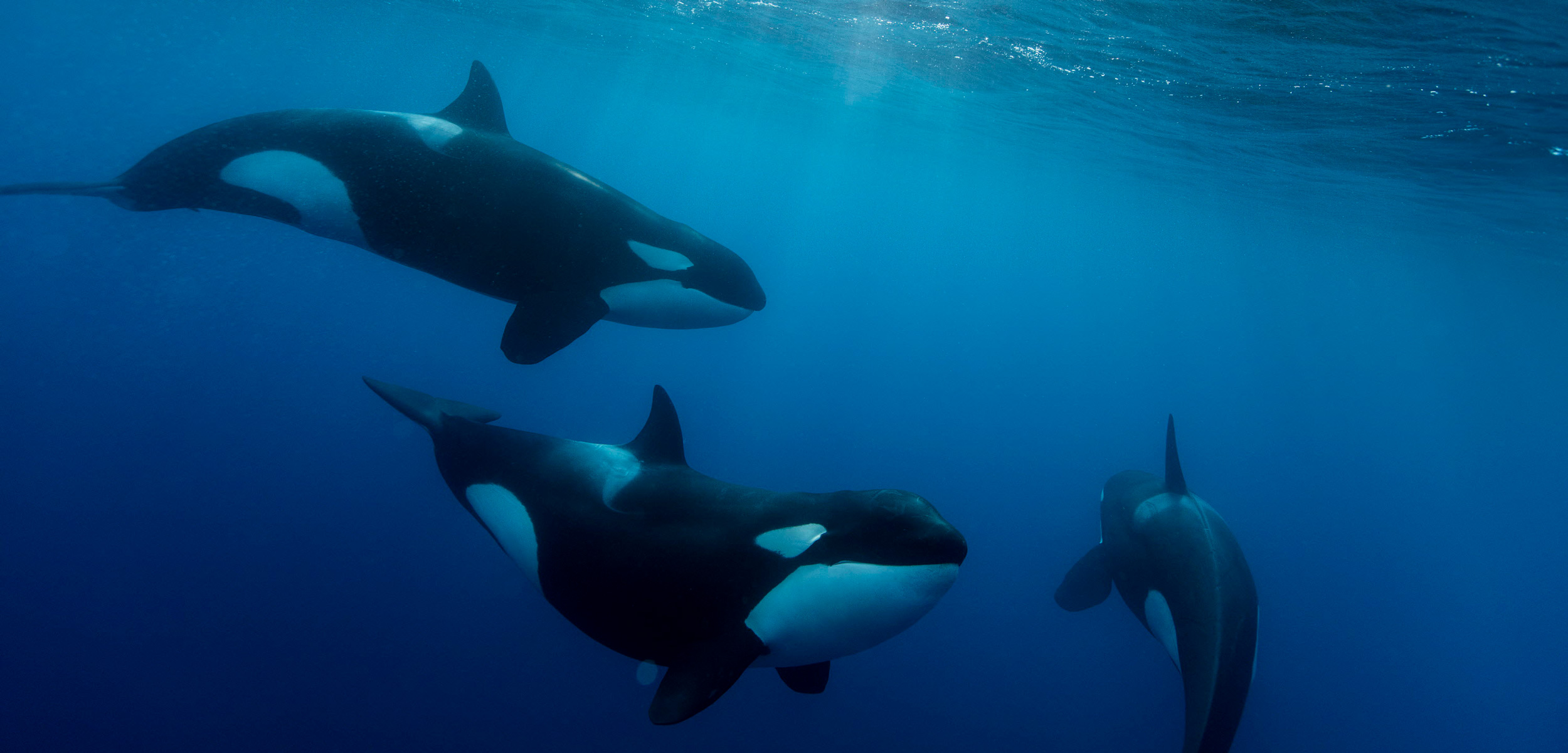Killer Whales’ Cultural Bottleneck
A new paper suggests killer whales’ cultures may be driving down their genetic diversity—but not all researchers agree.
Article body copy
Hal Whitehead says some killer whales appear to follow an old saying of his mother’s: they do what they do “because it’s the done thing.” In a recent paper, the biologist at Nova Scotia’s Dalhousie University suggests that a killer whale’s “done thing”—having a culture that often defines its behavior—has gone and done another thing: by amplifying differences between different killer whale groups’ DNA, culture has caused different populations of these iconic white and black whales to have limited genetic diversity. This scant diversity is likely to have serious ramifications down the line, as killer whales face a world that humans are rapidly changing beneath their fins.
Although not quite the same as a shared love of samba music or tribal tattoos, killer whale cultures, on a basic level, are not so different from human ones: they comprise sets of behaviors passed down through generations. Crucially, this transmission is social. Killer whales are taught these behaviors—they aren’t inherited through DNA. In some killer whale populations, culture revolves around what foods they eat: whether they specialize in hunting a single food (just fish, just seals, or just penguins, for example), or if they’ll munch on whatever they can catch.
In his study, Whitehead used a computer model that represented clusters of individual killer whales. He assigned each killer whale either a specialized or generalized hunting behavior. Whitehead then set the simulated whales to learn from one another.
“The part that’s particularly important in this model is that specialization,” he explains. “What happens is [the specialized killer whales] become really good at eating that prey type, they become more efficient. But they become less good at eating the other kinds of prey. It’s a trade-off there—and that’s what the model assumes.”
As time goes on, the model shows that specialized killer whales tend to lose out—their populations become smaller and have lower genetic diversity. This lack of genetic diversity showed up in the specialized killer whales’ nuclear genes, which they receive from both parents, but was most pronounced in their mitochondrial genes, which they get from only their mothers.
Reduced nuclear genetic diversity can lead to lower disease resistance, among other problems. This process may already be hurting reproduction rates for one group of highly specialized killer whales—the salmon-eating southern residents of the northeast Pacific.
Less mitochondrial diversity in these specialized whales suggests an even broader problem: according to Whitehead, it mirrors a lack of cultural diversity. Killer whale societies are matrilineal, with mothers passing down knowledge between generations. If their mothers’ genes are not introducing much variety, that suggests there aren’t many new inputs of culture, either.
Such inflexible cultures could leave killer whales less able to adapt to changes around them. For example, if salmon went extinct because of overfishing, pollution, or climate change, salmon-eating killer whales may be unable to kick their culturally mediated diet, leaving them unable to find new food.
Yet not every researcher agrees that these restrictive cultures make it all the way into the whales’ genetics.
Andrew Foote, a killer whale genetics expert at the Norwegian University of Science and Technology, disagrees that Whitehead’s model shows culture, specifically, is driving down genetic diversity. He sees the evidence pointing to geographic separation, also known as allopatry.
It works like this: thousands of years ago, killer whales stemmed from a common ancestor, and were a genetically uniform group. Then, this large group broke into smaller, geographically separated subgroups—sometimes because of global events, like ice ages, that trapped these small groups in limited areas. Just like Darwin’s finches, Foote says, these “islands” of killer whales evolved independently of each other. Some groups were so small that they experienced a founder effect, in which a very limited genetic profile became the group’s standard.
Over time, as ice melted and seas flowed together, these groups reunited. They lived side by side once more, but now showed very different—and among the founder effect groups, very limited—genetic codes.
Foote says the new paper is an example of a trend in killer whale science that worries him: of using culture as the default explanation for behavior, rather than searching for alternate possibilities.
“If we can’t find a genetic explanation for it, we assume it’s culture,” Foote says. “I think we can maybe question that a little bit, and set a high threshold on culture as the explanation, just as we put on a genetic explanation. A lot of times that means we won’t be able to identify what the cause is—but then we just have to be okay with saying we don’t know.”
Regardless of how these limits on genetic diversity came about, both Foote and Whitehead agree that killer whales that can’t adapt are likely in for tough times ahead.
Much of Foote’s genetic research has focused on the genetics of ancient killer whales, including populations that were not able to adapt to previous changes in Earth’s climate. These groups stayed behind as their fellows migrated into more habitable waters. Ultimately, whether it was their culture or their ancient heritage that limited them, these laggards went extinct.

